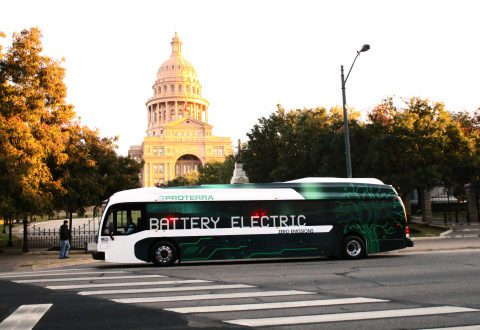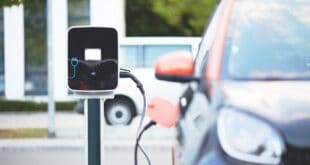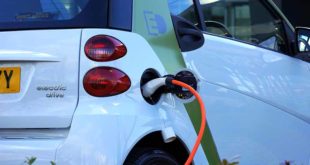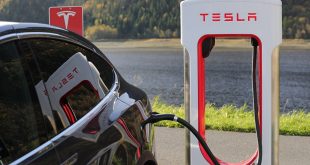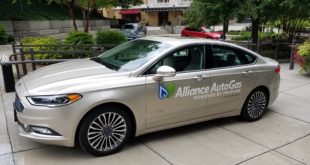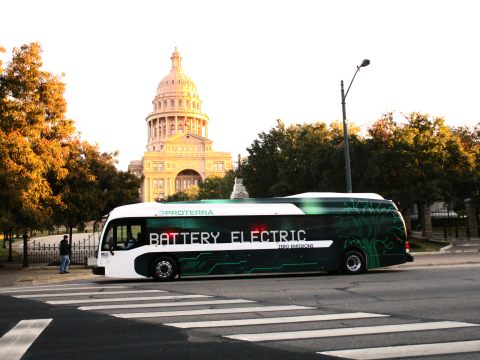
Despite the Trump administration’s apparent affection for the fossil fuels industry, individual states are looking at the numbers and coming up with a different conclusion: The future belongs to pollution-free electric vehicles, and the sooner we get them on the road, the better off we’ll all be. And there are some important new studies out that give a hint of just how much everyone will benefit.
From Massachusetts and New York to California, state governments are embracing plug-in electric vehicles (PEVs) and are setting – and achieving – goals to put PEVs on the road and removing petroleum-burning cars and trucks. States are finding that they can realize big benefits from at least three directions:
- Electric vehicle owners will see their vehicle operating costs go down.
- All residents will likely see electric rates kept in check.
- All consumers will enjoy cleaner air and better health as more polluting vehicles are rendered obsolete.
Multibillion-dollar savings
The latest in a series of studies by M.J. Bradley & Associates, commissioned by NRDC, project huge consumer savings in New York, Connecticut, Maryland, and Pennsylvania as more PEVs take the road in those states. An earlier report also found billions in savings for consumers in Massachusetts. The researchers conclude that electric cars and plug-in light trucks will have lower operating costs and much lower carbon pollution. The group also projects that all utility customers will benefit because additional utility company revenue from PEV charging can support operation and maintenance of the existing distribution infrastructure, thus reducing the need for future electricity rate increases.
The analyzed eastern states seek to be market leaders in Zero-Emission Vehicle (ZEV) deployment. Most have signed on to a ZEV Memorandum of Understanding (MOU) to put 3.3 million ZEVs on the road across eight states (NY, MA, VT, CT, RI, MD, CA and OR) by 2025. Additionally, they are promoting electric vehicle sales through purchase rebates and reduced-cost charging programs.
The M.J. Bradley & Associates studies assume two scenarios for each state:
- Scenario 1- ZEV MOU: States hit their respective MOU targets in 2025 with plug-in electric vehicles and continue to grow, reaching PEV sales of 7 percent to 11 percent in 2030 and 17 to 25 percent in 2050.
- Scenario 2 – 80×50: PEVs sales grow more rapidly to reduce greenhouse gas emissions from cars and light trucks by about 80 percent from 1990 levels by 2050, reflecting long-term climate goals of the states. PEV sales reach 25 percent to 27 percent in 2030 and 80 percent to 97 percent in 2050, depending on the state. These vehicles are also charged from a low-carbon grid that achieves similar emissions reductions in the power sector.
The studies also evaluated the effect of the time of day that vehicles were charged. In the baseline charging scenario, PEV owners come home from work and plug in their vehicles, which can coincide with high peak loads in the summer when home air conditioners are also switched on. The studies concluded, however, that greater bill savings could be achieved if drivers waited to plug-in until after peak electricity use hours, such as later at night, when there is less drain on the grid and electricity would be theoretically cheaper.
In the ZEV MOU baseline charging scenario the studies found savings to PEV owners, utility customers, and society total $3 billion to $18 billion per state by 2050. In the 80×50 scenario with the cleanest energy and off-peak charging, individual states could save from $17 billion to over $75 billion.

Of course, realizing all the savings above means that the electric vehicle market needs to continue to expand in those states. Recent initiatives continue to boost the market in the Northeast and Mid-Atlantic region. Massachusetts Governor Baker recently signed a bill to support ZEV adoption. The state’s two largest utilities have filed proposals with the Department of Public Utilities to make investments in electric vehicle infrastructure. In New Jersey, the ChargEVC coalition has formed to advance state electric vehicle policies. And Connecticut, like other regional states, added new funding for the state’s electric vehicle rebate program.
Other states also are making significant progress. As we’ve already reported, in 2016 in California the Public Utilities Commission approved a plan by Southern California Edison (SCE) and San Diego Gas & Electric (SDG&E) to install 5,000 charging stations and Pacific Gas and Electric (PG&E) to deploy approximately 7,500 charging stations in northern and central California. That infrastructure is critical to the state’s hope of supporting 1 million EVs by 2020.
The Oregon Legislature also has instructed the state’s Public Utilities Commission to direct utilities to create programs and investments to move more quickly toward “transportation electrification.”
The combination of state government pressure, the availability of charging stations, and rapidly advancing technology in the PEV sector are helping to build a market for electric vehicles. The predominate electric car maker, Tesla, reports that by the end of 2016 more than 400,000 drivers had put down $1,000 deposits on its new Model 3.
Of critical importance has been overcoming motorist fears of “running out of power” while driving, which carmakers are beating back with development of vehicles that will run at least 200 miles on a single charge. New market entrants, like Chevy’s 238-mile Bolt, could “mark a turning point for electric car market”, reports NPR. That range is only expected to improve in the years ahead. Also, the time it takes to recharge EV batteries is decreasing and expected to get even shorter.
In the best of all worlds, of course, it would be electricity generated from solar and wind energy that would power up electric vehicles. You can be assured that NRDC is fighting to accomplish that feat, as well, hoping someday that fossil fuels can be completely removed from the transportation picture.
 Alternative Energy HQ solar power for homes, wind energy, and bio fuel issues
Alternative Energy HQ solar power for homes, wind energy, and bio fuel issues
